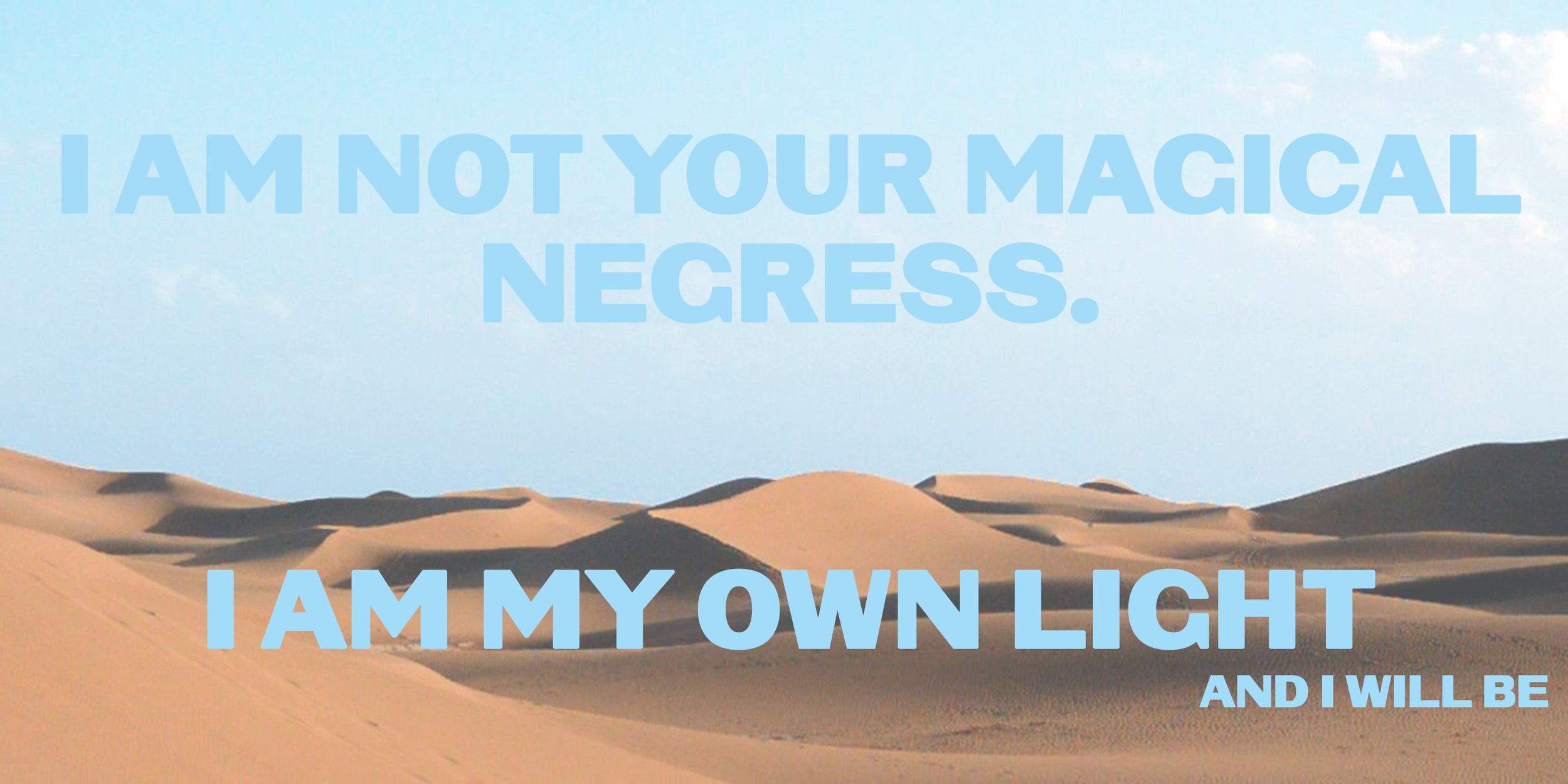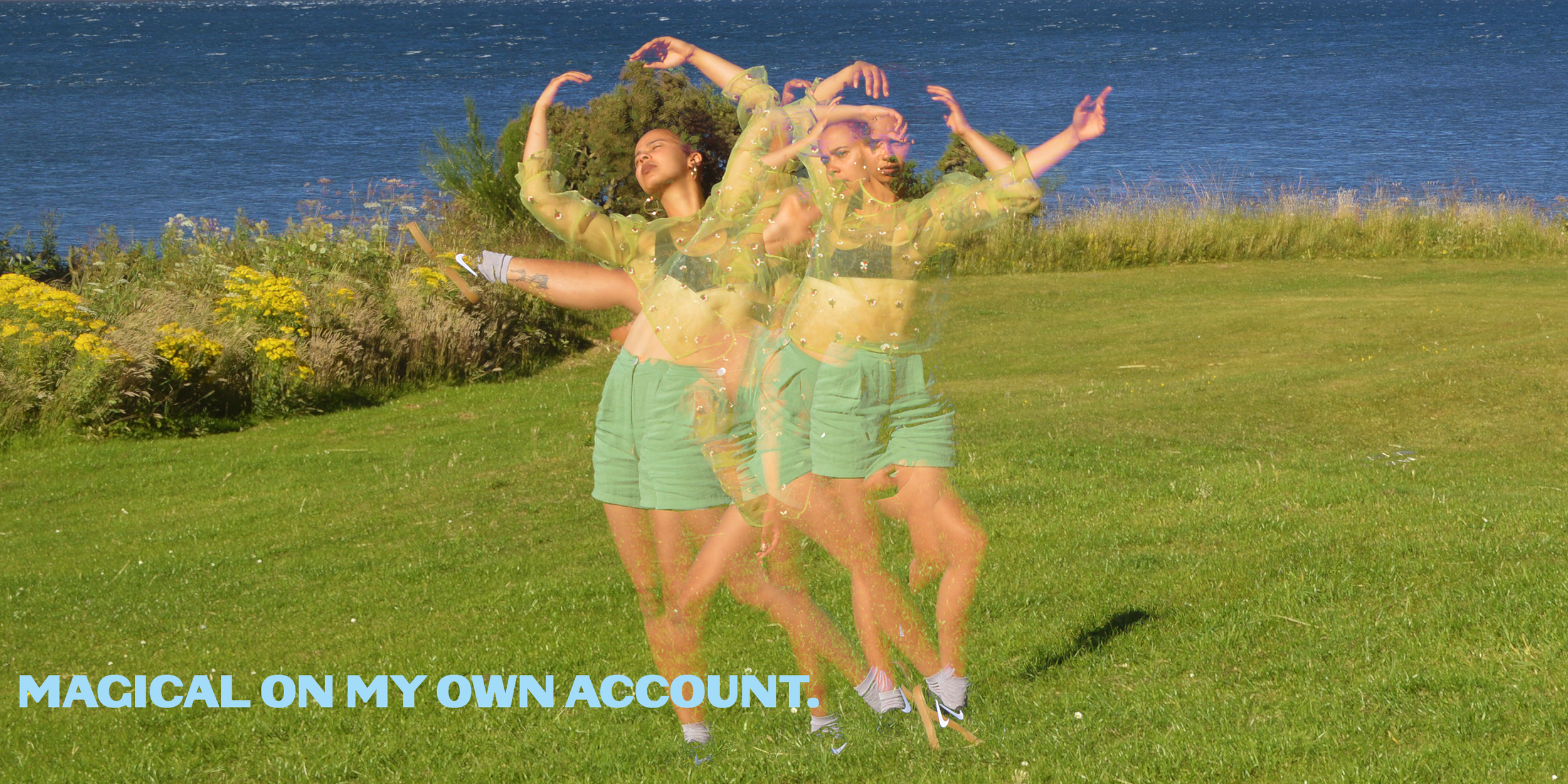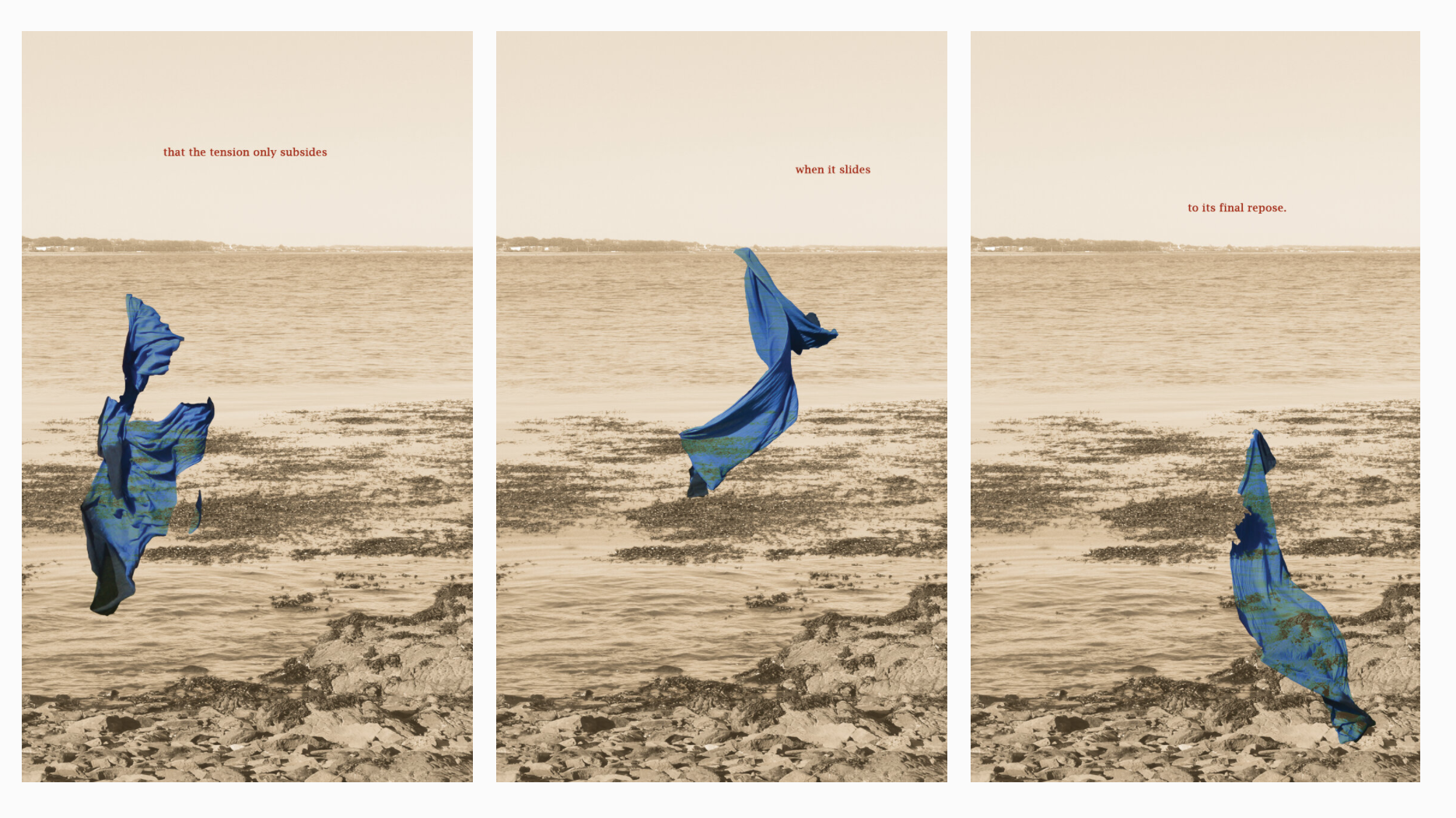Movement is the Moment is the Movement | Saoirse Amira Anis
Since graduating in 2018 from Dundee's Duncan of Jordanstone College of Art and Design with a BA Honours in Art & Philosophy, Saoirse Amira Anis has been dancing up a storm. Her work provides testimony to the emancipatory and radical effects of dancing and recording the movements of one’s body.
In her artist’s statement she speaks of ‘the essential movement which runs through everything’, an idea reminiscent of her philosophy training, which saw her develop an engrossment with Eastern philosophy, particularly concepts of interconnectivity, spiritual evolvement and the flow - be it time, water, bodies. These ideas are all traceable within her intuitive practice.
But it wasn’t always so. The performance art that she is making waves with is a fairly recent development in Anis’s practice which, in the halcyon days of art school, leaned more towards sculpture and photography.
If sculpture is an attempt to capture a still of movement, the step into dance was only natural - now Anis makes sculptures of her own form. I spoke with her to discuss ideas of intuition, the relationship between the personal and political, joy, dance and celebrating black culture. She told me that though she had exhibited performance art in several exhibitions previously, it was at an Echo event at the DCA in 2019, where she responded to Alberta Whittle’s 'How Flexible Can We Make the Mouth', that Anis knew that this was the direction she was being pulled in.
Initially feeling it ‘wasn’t art enough’, Anis has been conducting an ongoing investigation into this kind of limiting fallacy - a preposterous statement; to be ‘not art enough’ - exposing intuition as a neglected and undervalued factor not just within the arts, but across all disciplines.
To borrow Louis Arnaud Reid's expression, this notion of knowing 'without (or against) discursive thinking'; of following ‘a hunch’, allows for an organic practice that surprises both the artist and audience. Laughing with Anis, I asked her if her initial hesitance around performance art was because it seemed too simple, and we discussed the deceptively simple nature of joy itself. Could it really be this simple?
The course of our conversation reminded me of a 2008 poem ‘Joy is An Act of Resistance’ by poet Toi Derricotte, particularly the lines:
For months he came back
to her, the way a critic or lover
can build a whole
life on the long study of one
great work
Saoirse approaches her work in this similar dual stance, functioning as both critic and lover - and it is ‘movement’, in all it’s fluid iterations, that is the subject of her long study. From the critical perspective, her contribution to the artistic field is in the creation of work that shows black joy and liberation, in line with Derricotte’s aims and in opposition to a zeitgeist saturated with depictions of black pain and oppression.
Perhaps the greatest example of this critical resistance is her work ‘We Can Still Dance’, exhibited at Edinburgh’s Jupiter Artland as part of the BLM Mural Trail with the Edinburgh Art Festival in 2020. The works featured two large photo stand-ins that bear the words:
'I Am Not Your Magical Negress. I Am My Own Light and I Will Be Magical On My Own Account.'
The structure invites you to put your head in: to participate and interact with her stance, which embodies Audre Lorde’s idea that caring for oneself, as a Black woman, is an act of political warfare that allows for self-determination.
Anis’ blend of performance and visual art steps away from the traditional interpretation of performance art pioneered by women such as Marina Abramovic, which really focalised on displays of what the body can withstand. Instead, Anis showcases what the body wants to do, how it wants to move, what makes it happy.
We discussed Anis' upcoming projects, and I was reminded of her own poem 'An Ode to Fear and Fire' where she talks about 'peripherally considering the outcome and ignoring it' to focus on the pursuit of amorphous intuition. Regarding these new projects, she assures me that the music has not stopped and the dance continues on.
As we part ways, her poem continues to float around my mind:
by listening gently
to the water against which
we should not struggle,
intuitively,
that which should be created
will be created.
Words by Cheryl McGregor





